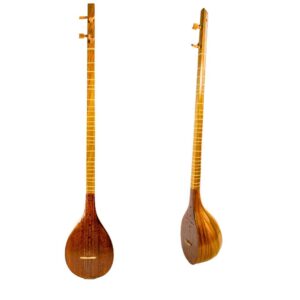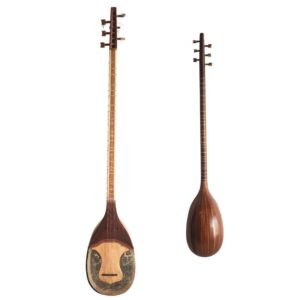Setar
The Iranian Setar, commonly known as the Persian Setar, is an esteemed stringed instrument that occupies a prominent role in Persian traditional music. As a member of the tanbur family, which comprises long-necked lutes, the Setar stands out as a unique lute with an impressive range that spans over two and a half octaves.
While the Setar primarily serves as a solo instrument, it also frequently accompanies vocal performances, enriching the musical experience. Originally featuring three strings, the Setar underwent a significant development in the mid-19th century with the addition of a fourth string, enhancing its melodic capabilities.
Mastering the art of playing the Setar requires a distinct technique. Musicians employ their right hand’s index finger to pluck the strings, yielding nuanced and intricate melodies. This method of playing grants the player extraordinary control over the instrument, resulting in a mesmerizing sound that distinctly characterizes Persian traditional music.
Deeply intertwined with Iranian culture, the Setar holds immense cultural significance, revered for its capacity to evoke emotions and convey the essence of Persian musical traditions. Its elegant design, featuring a small body and a long neck, stands as a testament to the remarkable craftsmanship and artistry of its creators.
Embark on an enriching journey into the world of Persian traditional music with the Iranian Setar, an instrument that reverberates with the soul of Iran’s splendid cultural heritage. Immerse yourself in its captivating melodies and embrace the beauty of Persian musical expressions.
Showing all 5 resultsSorted by price: low to high
-
Sale!

Persian Tanboor
Original price was: € 335,15.€ 289,13Current price is: € 289,13.Read more- USD: $345,21
-

Setar – Light of Persian Music Tradition
€ 299,00Add to cart- USD: $356,99
-

Setar – Light of Persian Music Tradition
€ 299,00Add to cart- USD: $356,99
-

Persian Setar – Iranian Setar n.1
€ 299,89Add to cart- USD: $358,06
-
Sale!

Persian Shourangiz
Original price was: € 650,00.€ 499,00Current price is: € 499,00.Read more- USD: $595,79


